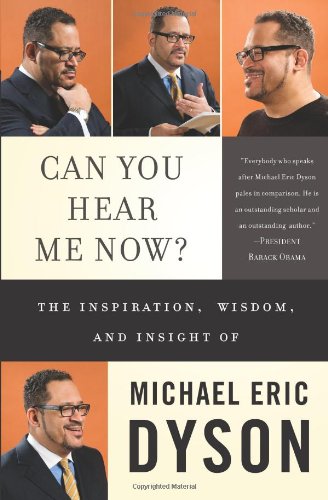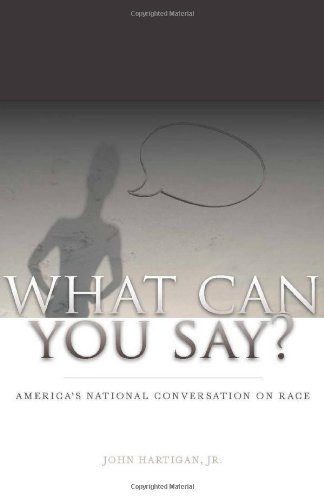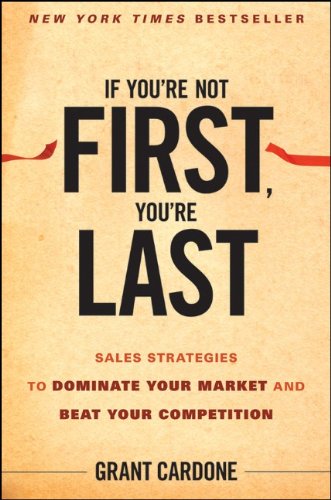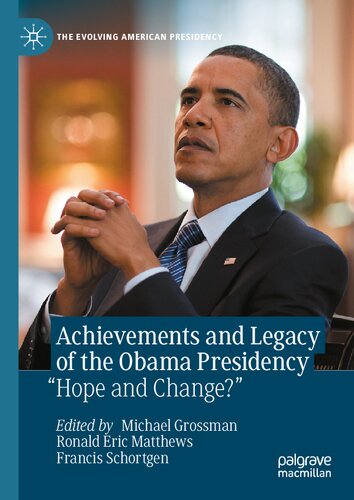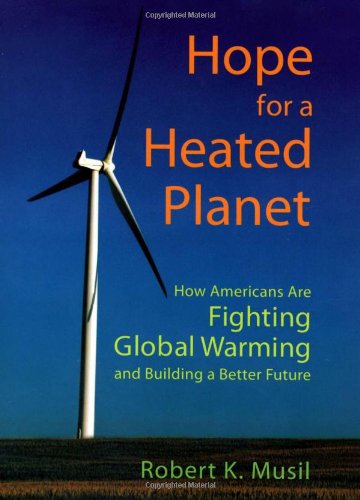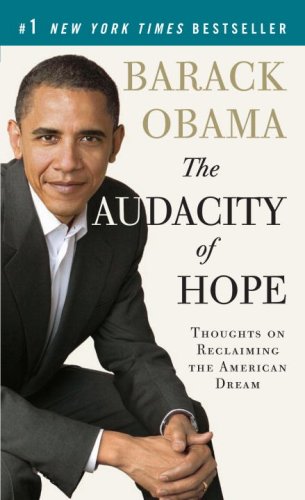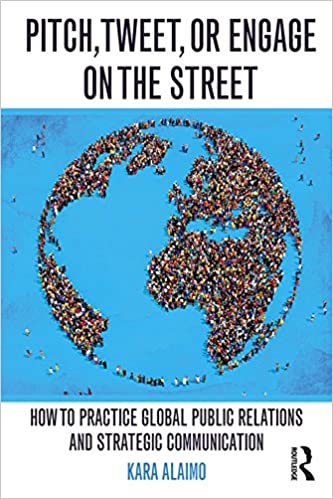موضوعات
آموزش و پرورش
ادبیات و زبان
پزشکی، دندانپزشکی و داروسازی
تاریخ و جغرافیا
داستان و رمان
دیگر
دین و فلسفه
روانشناسی
ریاضیات و آمار
سلامتی، تناسب اندام و رژیم غذایی
شیمی و پلیمر
علوم اجتماعی و حقوق
علوم زیستی و بیوتکنولوژی
فیزیک و نجوم
کامپیوتر و اینترنت
کتابهای کودکان و داستان
کسب و کار و اقتصاد
کشاورزی و دامپزشکی و غذا
معماری
مهندسی و فناوری
هنر و تئاتر
محصولات
Can You Hear Me Now?: The Inspiration, Wisdom, and Insight of Michael Eric Dyson - PDF
نویسندگان: خلاصه: Over the last 20 years, Michael Eric Dyson has become one of America’s most visible—and quotable—public intellectuals. Whether in his sixteen books, or in countless newspapers, television and radio appearances, or on stages, podiums, and pulpits across the world, Dyson has spun an enchanting web of words that has caught the attention of the masses and elites alike. He has weighed in on a myriad array of topics – from faith to fatherhood, and from race to sex, as well as sports, manhood, gender, music, leadership, politics, language, love, justice, literature, suffering, death, hope, relationships and much, much more.Can You Hear Me Now?, offers a sampling of Dyson’s sharp wit, profound thought, and edifying eloquence on the enduring problems of humanity, from love to justice, and the latest topics of the day, including race and the presidency. It is both revealing and relevant, and at once thoughtful provoking and uplifting. Whether he is writing about Jay-Z or Barack Obama, addressing racial catastrophes or opportunities, or speaking about religion or the felicities of King’s rhetoric, Dyson’s intellect shines with insight and inspiration.Can You Hear Me Now? captures Dyson’s incredible facility with words, and his prodigious intelligence, at a time when he has gained greater fame as a public intellectual, university professor, best-selling author, and most recently, as one of the first prominent blacks to endorse President Barack Obama. The time is ripe for his wit, wisdom and worldview, and this book is Dyson’s most accessible compendium of thinking on a broad range of topics that haunt and shape the nation.What Can You Say?: America's National Conversation on Race - PDF
نویسندگان: خلاصه: We are in a transitional moment in our national conversation on race. "Despite optimistic predictions that Barack Obama's election would signal the end of race as an issue in America, the race-related news stories just keep coming. Race remains a political and polarizing issue, and the sprawling, unwieldy, and often maddening means we have developed to discuss and evaluate what counts as "racial" can be frustrating. In What Can You Say?, John Hartigan Jr. examines a watershed year of news stories, taking these events as a way to understand American culture and challenge our existing notions of what is racial—or not.The book follows race stories that have made news headlines—including Don Imus's remarks about the Rutgers women's basketball team, protests in Jena, Louisiana, and Barack Obama's presidential campaign—to trace the shifting contours of mainstream U.S. public discussions of race as they incorporate new voices, words, and images. Focused on the underlying dynamics of American culture that shape this conversation, this book aims to make us more fluent in assessing the stories we consume about race. Advancing our conversation on race hinges on recognizing and challenging the cultural conventions governing the ways we speak about and recognize race. In drawing attention to this curious cultural artifact, our national conversation on race, Hartigan ultimately offers a way to to understand race in the totality of American culture, as a constantly evolving debate. As this book demonstrates, the conversation is far from over.If You're Not First, You're Last: Sales Strategies to Dominate Your Market and Beat Your Competition - Original PDF
نویسندگان: خلاصه: The Importance of FirstAlthough the concept of first or last may sound unfair anddifficult to accept for some, in the real world—regardlessof your business or career—first place is the only place thatmatters. It’s a position that allows you to weather all storms,gets you extra attention, and has the competition chasingyou—rather than the other way around. But let’s face it: ifyou didn’t compromise on any point, you would certainlyrather the position of first than any other, right? Given thechoice between first and any other position, we all knowwhat’s preferable.Unlike systems or cultures where everyone getsrewarded for just participating and regardless of theirefforts, abilities, or even the score—the only positionthat ultimately makes sense in business—and the onethat earns the greatest rewards—is, of course, first. If youaren’t in the dominant position in your market, then youare at risk. When economies are abound with business, thecompany in first position continues to gain customers andexpand its size and presence while the weaker players ekeout increasingly smaller gains, helped along solely by thevi INTRODUCTIONrich nature of the market. However, when these profitabletimes wane, the dominant company benefits from its first-place position and grabs market share away from all theother contenders while those in every other position paythe price.Merriam-Webster’s defines the word first as “pre-ceding all others in time, order, or importance.” Beingfirst to the market is not as important as being numberone in your category; you don’t necessarily have to bethe company introducing a product to be the best choicein the buyer’s mind. Order and importance are muchmore vital here than time. There is also a big differencebetween being first and third in Google search results, asevidenced by companies like first-place Intel and second-place Advanced Micro. As of December 2009, Intel hadearned $32.7 billion in revenue and had $13 billion incash, whereas Advanced Micro had $4.92 billion in rev-enues and $2.5 billion in cash. And consider the competi-tion between Barack Obama and John McCain. Only afew points separated a name that has made history. Again,Barack was not first to the market; he actually came 30years after his opponent and had much less experience.Yet he managed to win not just the number one spot, butthe most powerful position in the world.So quit compromising and being “reasonable.” Let’sget you fighting—every minute of every day—for thenumber one spot in your business. You want to be on topwhen the market is great and take market share when itis not.We are proud boys - Epub + Converted PDF
نویسندگان: خلاصه: It was late in March 2016, in the heat of Trump’s presidential push, and the national media had latched onto one bit of security footage from a Trump event. The video showed Trump’s campaign manager, Corey Lewandowski, grabbing and pushing Breitbart writer Michelle Fields as she approached Trump and tapped his elbow. Fields claimed that Lewandowski left bruises on her arm. It was enough that police charged Lewandowski with simple battery, but prosecutors ultimately dropped the case. He shrugged off the allegation and the news cycle that followed, which left the pundits to bicker among themselves over the footage and decide whether an assault had occurred. McInnes, staring slack-jawed at the footage during an episode of his reactionary talk show, couldn’t believe it warranted media attention in the first place. A woman touched a presidential candidate and got what was coming to her, he argued. If anything, she deserved more. “She wasn’t randomly grabbed!” he groused, his voice pitching upward in aggravation as the video played. “I think there’s not enough violence in today’s day and age.” McInnes then launched into one of his signature rants, steering the conversation toward his keynote: America had gone soft in the waning years of Barack Obama’s presidency, and there was no better evidence than the news media clutching its pearls over a woman being grabbed and pushed out of the way. Real Americans—real men—wouldn’t give this story the time of day. Real men are hardened by a lifetime of violenceAchievements and Legacy of the Obama Presidency: “Hope and Change?” - Original PDF
نویسندگان: خلاصه: Campaigning on the simple mantra of HOPE, Obama’s mindset was that his legacy would not be one of race or ethnicity but one of positive change and unity across the political divide. He arrived in Washington, D.C. riding a wave of optimism as the American polity had grown tired and weary of the partisan politics and was looking for a “savior of sorts” who would restore their belief in the American dream and in equality and justice for all. But as Chuck Todd (2014: 471) notes, “hope is one thing, change another.” Obama would spend the next eight years fighting the partisanship and political dysfunction that he was elected to trans- form, including at times a debilitated Democratic controlled Congress and Republicans who sat out to stop every attempt of the president to bring about change. Despite all this apparent chaos, confusion and partisanship, Obama went to work to fulfill many of his campaign promises. In so doing, he would work with anyone who wanted to change the status quo. Obama would advocate for revising the social safety net programs and appear to be siding with Republicans while angering Democrats. At other times, he would side with Democrats for healthcare reform, gun control and amnesty for illegal immigrants to the disgust of his Republican counter- parts. When necessary, he would work around Congress by signing 276 executive orders and issuing another 1186 presidential proclamations. He gave us the Affordable Care Act, the stimulus, the Dodd-Frank Wall Street Reform, an executive action for Dreamers, the repeal of “Don’t Ask, Don’t Tell,” a nuclear deal with Iran, diplomatic relations with Cuba, a climate deal in Paris, a New START treaty, a reform of student-loan programs, and two liberal Supreme Court appointments (Frank 2019). As his second term came to a close, Obama would leave office with an impressive list of accomplishments but an approval rating 10 points lower than when he took office.1 When he left the Oval Office, the country had endured twenty-four straight years of polarizing presidents, all three of whom were elected, in part, to help end some of the acrimony (Todd 1 President Barack Obama would leave office with an approval rating of 57% according to a survey from the polling firm Gallup taken from January 9 to 15, 2017. Obama’s exiting approval rating is 23% points higher than those of former President George W. Bush but nine points lower than those of President Bill Clinton. 1 INTRODUCTION 3 2014: 490). But the divisiveness that had paralyzed so many presidents in their quest to fortify their legacy was waiting in the wings. Presidential legacies are often cemented by whom the electorate selects to take the place of the incumbent. Since the Civil War, only two presi- dents, Ulysses S. Grant and Ronald Reagan, have served two full terms, then given way to another member of their own party, winning a veri- table third term (Todd 2014: 481). Not so for President Obama. Despite having an “anointed successor” in Hillary Clinton and a seasoned Vice President in Joe Biden, Obama’s plan for a systematic overhaul of the bureaucracy and hope for an end to persistent inside-the-Beltway grid- lock would come to an abrupt halt. The plan to galvanize his legacy through the election of Hillary Clinton was stopped dead in its tracks when Republican maverick Donald J. Trump was elected the 45th Pres- ident of the United States in an election result that even the staunchest Republicans called shocking.Hope for a Heated Planet: How Americans Are Fighting Global Warming and Building a Better Future - Original PDF
نویسندگان: خلاصه: am finishing this book in the final days of the George W. Bush adminis- tration. For those of us who love the environment and long for peace, it has been a dark time. Through it, I have often thought of the words of the poet Theodore Roethke that I first heard from scholar and activist Robert Jay Lifton: “In a dark time, the eye begins to see.” The first light of dawn is now visible as the Democratic candidate, Senator Barack Obama, pushed by a growing grassroots movement, embraces action on climate change. To a lesser degree, though far more than President Bush, so does the Republican contender, Senator John McCain. That was far from the case when I began this project at the height of the president’s wartime popularity. This has turned out to be a book as much about hope and democracy as it is about global warming. Its central theme is that you and I can change history. What we believe, what actions we take, actually matter. It is an idea central to democracy. And it should give us hope. I disagree, strongly, with those who believe the American public has turned into a hopeless gaggle of consumers and couch potatoes who are content to let others rule their lives—or destroy the planet. At the height of President Bush’s popularity and influence it may have appeared that way. But national security and environmental degradation (especially global climate change) are complex, difficult, and abstract sub- jects. It has taken some time for us Americans to grasp the gravity of our situation, from melting ice caps to Iraq. This is especially true when our media mostly cover the White House and the Pentagon—regardless of the occupants—and report each utterance as gospel. Meanwhile, most of us are busy with jobs, families, and problems near home that we can actually see and do something about. The result has been that global warming—caused by the vast outpour- x P REFACE ings of carbon dioxide (CO2) and other pollutants from our cars, buildings, and factories—has increased and is picking up speed. But at the same time, so has a growing and revived environmental movement. It is joined now with new allies from the religious community, business, labor, medical and public health professionals, educators, and more. This new climate move- ment has deep roots in the big environmental groups, too often ignored or derided, that have been working to warn us and prevent global climate change since the elder George Bush’s administration in the 1980s. Their work is now bearing fruit. The public is becoming aroused and engaged. And, as a result, we will have a new, much more climate-friendly president and Congress in 2009. This book tells that story and also ex- plains the basics of climate change and its effects on human health and well-being—not just on polar bears and penguins. But Hope for a Heated Planet is finally about solutions to our dilemma. I’ve tried to give you the best steps you can take, both personal and political, to make a difference and to get involved. Like most authors, I like to imagine, of course, that our new president will take to heart every word I have poured out here. But even more impor- tant is that you do. My mother, Margaret Kirkland Musil, died after ninety- one wonderful years as I was writing. She taught me to love life, to love nature, to learn, to have faith, and to act on my beliefs. My first grandchild, Catherine Kirkland Unruh, was born shortly after. She will need the same lessons. So will all our children and grandchildren. Global climate change, we now know, can be prevented by building a vi- brant, healthy economy that does away with the belching furnaces, smoke- stacks, and combustion engines from the outmoded technologies of the nineteenth and twentieth centuries. But in a democracy, that will depend not on our new president, or the one after that. It is up to us. And the signs now are that many, many citizens and their organizations in this great na- tion are indeed aroused. But to prevail, we will need even more. That is really why I have written. I want you and your family and friends to join with me and millions of other Americans in making history. Nobody else can, or should, do it for youThe Audacity of Hope. Thoughts on Reclaiming the American Dream - Original PDF
نویسندگان: خلاصه: Republicans and Democrats ON MOST DAYS, I enter the Capitol through the basement. A small subway train carries me from the Hart Building, where my office is located, through an underground tunnel lined with the flags and seals of the fifty states. The train creaks to a halt and I make my way, past bustling staffers, maintenance crews, and the occasional tour group, to the bank of old elevators that takes me to the second floor. Stepping off, I weave around the swarm of press that normally gathers there, say hello to the Capitol Police, and enter, through a stately set of double doors, onto the floor of the U.S. Senate. The Senate chamber is not the most beautiful space in the Capitol, but it is imposing nonetheless. The dun-colored walls are set off by panels of blue damask and columns of finely veined marble. Overhead, the ceiling forms a creamy white oval, with an American eagle etched in its center. Above the visitors’ gallery, the busts of the nation’s first twenty vice presidents sit in solemn repose. And in gentle steps, one hundred mahogany desks rise from the well of the Senate in four horseshoe-shaped rows. Some of these desks date back to 1819, and atop each desk is a tidy receptacle for inkwells and quills. Open the drawer of any desk, and you will find within the names of the senators who once used it—Taft and Long, Stennis and Kennedy—scratched or penned in the senator’s own hand. Sometimes, standing there in the chamber, I can imagine Paul Douglas or Hubert Humphrey at one of these desks, urging yet again the adoption of civil rights legislation; or Joe McCarthy, a few desks over, thumbing through lists, preparing to name names; or LBJ prowling the aisles, grabbing lapels and gathering votes. Sometimes I will wander over to the desk where Daniel Webster once sat and imagine him rising before the packed gallery and his colleagues, his eyes blazing as he thunderously defends the Union against the forces of secession. But these moments fade quickly. Except for the few minutes that it takes to vote, my colleagues and I don’t spend much time on the Senate floor. Most of the decisions— about what bills to call and when to call them, about how amendments will be handled and how uncooperative senators will be made to cooperate—have been worked out well in advance by the majority leader, the relevant committee chairman, their staffs, and (depending on the degree of controversy involved and the magnanimity of the Republican handling the bill) their Democratic counterparts. By the time we reach the floor and the clerk starts calling the roll, each of the senators will have determined—in consultation with his or her staff, caucus leader, preferred lobbyists, interest groups, constituent mail, and ideological leanings—just how to position himself on the issue. It makes for an efficient process, which is much appreciated by the members, who are juggling twelve- or thirteen-hour schedules and want to get back to their offices to meet constituents or return phone calls, to a nearby hotel to cultivate donors, or to the television studio for a live interview. If you stick around, though, you may see one lone senator standing at his desk after the others have left, seeking recognition to deliver a statement on the floor. It may be an explanation of a bill he’s introducing, or it may be a broader commentary on some unmet national challenge. The speaker’s voice may flareRip by XmosRips with passion; his arguments—about cuts to programs for the poor, or obstructionism on judicial appointments, or the need for energy independence—may be soundly constructed. But the speaker will be addressing a near-empty chamber: just the presiding officer, a few staffers, the Senate reporter, and C-SPAN’s unblinking eye. The speaker will finish. A blue-uniformed page will silently gather the statement for the official record. Another senator may enter as the first one departs, and she will stand at her desk, seek recognition, and deliver her statement, repeating the ritual. In the world’s greatest deliberative body, no one is listeningNuclear Disarmament and Non-Proliferation: Towards a Nuclear-Weapon-Free World? (Routledge Global Security Studies 20) - Original PDF
نویسندگان: خلاصه: This book examines the current debate on nuclear non-proliferation and disarmament, notably the international non-proliferation regime and how to implement its disarmament provisions. Discussing the requirements of a new international consensus on nuclear disarmament and non-proliferation, this book builds on the three pillars of the nuclear non-proliferation treaty (NPT): non-proliferation, disarmament and peaceful uses of nuclear energy. It reviews the impact of Cold War and post-Cold War policies on current disarmament initiatives and analyses contemporary proliferation problems: how to deal with the states that never joined the NPT (India, Pakistan and Israel); how states that have been moving toward nuclear weapons have been brought back to non-nuclear-weapon status; and, in particular, how to deal with Iran and North Korea. The analysis centres on the relationship between disarmament and non-proliferation in an increasingly multi-centric world involving China and India as well as the US, the European powers and Russia. It concludes with a description and discussion of three different worlds without nuclear weapons and their implications for nuclear disarmament policies.???????????? This book will be of great interest to all students of arms control, strategic studies, war and conflict studies, and IR/security studies in general Sverre Lodgaard is a Senior Research Fellow at the Norwegian Institute of International Affairs, Osloآیا کتاب مورد نظر هنوز بر روی سایت قرار نگرفته است؟ جای نگرانی نیست! کافی است بر روی گزینه سفارش کتاب کلیک کرده و درخواست خود را ثبت کنید. در کمتر از چند ساعت کتاب شما را آماده خواهیم کرد.
